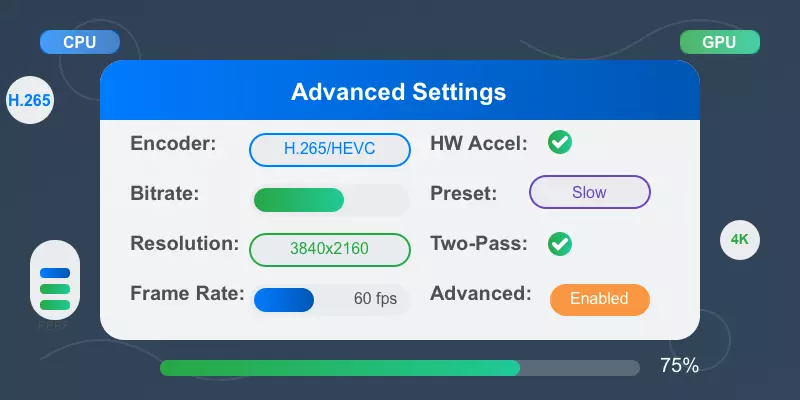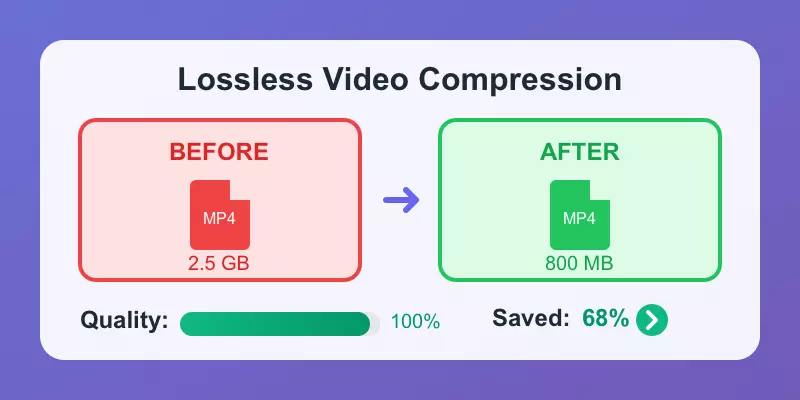4K Video & Ultra HD
Comprehensive articles and resources about 4K video processing, Ultra HD content creation, conversion techniques, and optimization strategies for ultra-high definition video.
Articles Tagged with "4K"
4K Video Conversion: Best Practices and Settings
Master 4K video conversion with optimal settings, hardware requirements, and techniques for maintaining ultra-high quality while managing file sizes effectively.
Read MoreUnderstanding Video Codecs: H.264 vs. H.265 vs. AV1
Compare the most popular video codecs for 4K content. Learn about their compression efficiency, compatibility, and best use cases for ultra-high definition video.
Read MoreAdvanced Video Conversion Techniques
Master professional video conversion settings, codecs, and optimization techniques for superior 4K results. Learn about hardware acceleration and quality optimization.
Read MoreLossless Video Compression Guide
Master the art of lossless video compression for 4K content. Learn about advanced codecs, settings, and techniques for preserving maximum quality in ultra-high definition.
Read MoreLearn More About 4K Video
About 4K Ultra High Definition Video
4K video, also known as Ultra High Definition (UHD), represents the current pinnacle of consumer video quality with a resolution of 3840×2160 pixels—four times the pixel count of Full HD 1080p. This revolutionary format delivers unprecedented detail, clarity, and visual fidelity that transforms the viewing experience across entertainment, professional production, and content creation. As display technology advances and internet bandwidth increases, 4K has become the new standard for premium video content.
Visual Advantages
- Ultra-sharp detail: 8.3 million pixels for crystal-clear imagery
- Enhanced clarity: Fine textures and details visible at close viewing
- Future-proof quality: Maintains sharpness on large displays
- Professional standard: Industry benchmark for high-end production
- Immersive experience: Cinema-quality viewing at home
4K Applications
- Streaming services: Netflix, Amazon Prime, Disney+
- Gaming: PlayStation 5, Xbox Series X, PC gaming
- Content creation: YouTube, professional video production
- Photography: High-resolution photo slideshows
- Security: Surveillance systems with detailed monitoring
4K Technical Specifications
Resolution Standards
UHD-1: 3840×2160 (consumer standard)
Cinema 4K: 4096×2160 (professional)
Aspect ratio: 16:9 for UHD, 17:9 for Cinema
Frame Rates
Standard: 24p, 25p, 30p for cinema/broadcast
High frame rate: 50p, 60p for sports/gaming
Variable: Adaptive frame rates for streaming
Color & HDR
Color space: Rec. 2020 wide color gamut
Bit depth: 10-bit for professional, 8-bit consumer
HDR support: HDR10, Dolby Vision, HLG
4K Codec Optimization
4K Future Trends
4K technology continues evolving with 8K on the horizon, AI-powered upscaling becoming mainstream, and real-time 4K streaming becoming more accessible. Cloud gaming, virtual reality, and augmented reality applications are driving demand for even higher resolutions, while improved compression algorithms make 4K content more bandwidth-efficient and widely accessible across all devices and network conditions.



